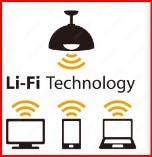Li-Fi, or Light Fidelity, is a wireless communication technology that uses light waves to transmit data. Contrary to this Wi-Fi uses traditional radio waves, typically 2.4 GhZ or 5 GhZ. Li-Fi leverages LED light bulbs to deliver high-speed internet by modulating the light intensity in a way that is imperceptible to the human eye, enabling it to carry data in a manner similar to how Wi-Fi uses radio frequencies.
Life has the capability to transmit data through LEDs. Li-Fi-enabled devices use LED light bulbs that rapidly modulate light intensity (turning on and off thousands of times per second) to create a binary data stream (1s and 0s). Devices equipped with a photodetector receive this modulated light, decode the binary signals, and translate them into data that the device can use.
Like Wi-Fi, Li-Fi can support bidirectional data transfer, but it requires a line-of-sight connection between the LED transmitter and the receiver. The latter may appear as a major disadvantage, but on the other hand LiFi offers excellent speed and can potentially offer data speeds up to 100 times faster than Wi-Fi, reaching speeds over 100 Gbps in ideal conditions.
Moreover, since light waves are used, Li-Fi doesn’t interfere with radio frequencies, making it ideal for environments where radio frequency interference is a problem, such as hospitals, airplanes, and industrial areas. As the light waves cannot penetrate walls, LiFi offers enchanced security and inherently limits the network range and unauthorized users outside the physical space cannot access the network. (to be continued)


